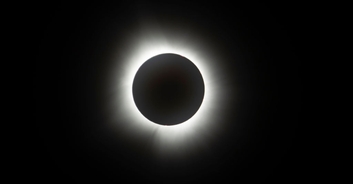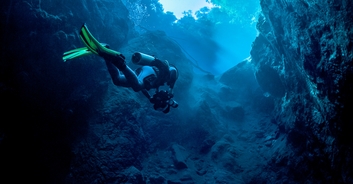Over 100 new species have been discovered in the depths of the sea thanks to a new mission by an international group of scientists.
The group, led by Dr. Javier Sellanes of the Universidad Católica del Norte, believes they have found over 100 new creatures living on seamounts off the coast of Chile.
The recent expedition, by Schmidt Ocean Institute, set out to identify deep-sea corals, glass sponges, sea urchins, amphipods, squat lobsters, and other species which may never have been seen before.
The group explored a 2,900km underwater mountain chain known as the Salas y Gómez Ridge both inside and outside Chile's jurisdiction in order to collect data on what lies beneath - and were stunned by what they found.
The team explored over 200 seamounts along the Nazca and Salas y Gómez Ridge, that stretches from offshore Chile to Rapa Nui, also known as Easter Island, to collect vital data that could support the designation of an international high-seas marine protected area, with much of the ridge existing outside of national jurisdiction.
As well as this, the team of scientists also explored two marine protected areas in Chile - the Juan Fernandez and Nazca-Desventuradas marine parks - to collect data to advance Chile's marine protection efforts.
They used an underwater robot which is able to descend to depths of 4,500 meters, and found that each of the 10 sea mounts they visited hosted distinct ecosystems.
Many of the ecosystems they found are vulnerable, including thriving deep-sea coral reefs and sponge gardens, and took specimens to analyze.
The physiology and genetics of the samples will be analyzed to see if they are new to science and therefore belong to a new species altogether.
As part of the project, experts aboard the ship also mapped 52,777 square kilometers of the sea floor, discovering four seamounts within Chilean waters, the last of which - that is the tallest mountain at 3,530 meters - being explored for the first time. Scientists were able to map the mount and have unofficially named it Solito.
Dr. Javier Sellanes told Schmidt Ocean: "We far exceeded our hopes on this expedition. You always expect to find new species in these remote and poorly explored areas, but the amount we found, especially for some groups like sponges, is mind-blowing.
"These thriving and healthy ecosystems indicate that the Nazca-Desventuradas and Juan Fernández Marine Parks effectively protect delicate marine habitats."

A second expedition along the Salas y Gómez Ridge began on February 24, with the Schmidt Ocean Institute live-streaming scientists diving to depths of 600 meters for the first time.
Missions will also operate in the Southeast Pacific throughout 2024, exploring the waters off Peru and Chile.
Schmidt Ocean Institute Executive Director Dr. Jyotika Virmani said of the recent discoveries: "Full species identification can take many years, and Dr. Sellanas and his team have an incredible number of samples from this amazingly beautiful and little-known biodiversity hotspot.
"Schmidt Ocean Institute is a partner with the Nippon Foundation – Nekton Ocean Census Program, which has set a target of finding 100,000 new marine species in the next ten years and, once identified, these new species will be a part of that."
There are still vast amounts of the ocean humans have yet to discover, but it seems we might just be around 100 species closer to seeing what lies beneath.










